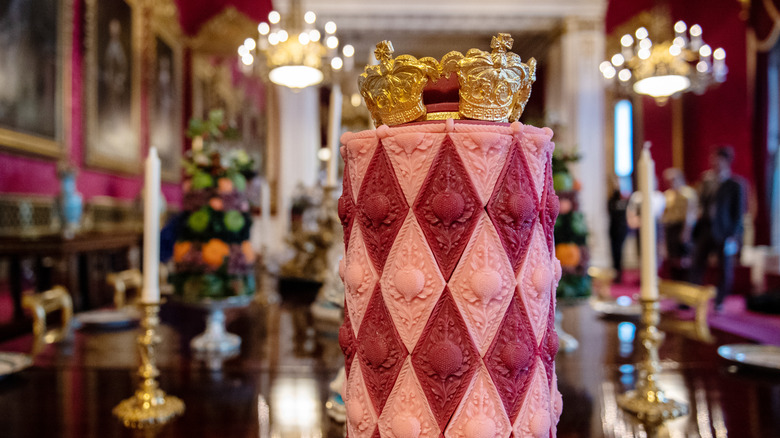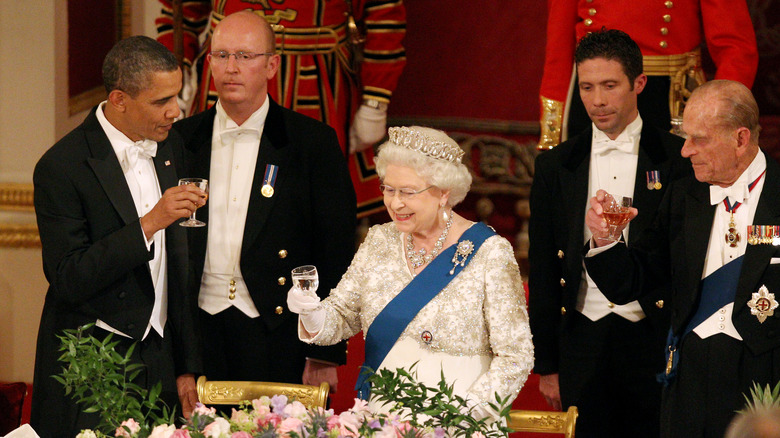The Poison Prevention Measure Taken At Every Catered Royal Dinner
A British royal banquet isn't exactly a casual affair — in fact, it's closer to a Broadway show crossed with a lunar landing. Between Buckingham Palace protocols, traditions, and rituals, a mini army of staff ensures everything goes like clockwork.
One of the more memorable dinners, according to Flashbak, was in 1961, when Queen Elizabeth II hosted President John F. Kennedy and First Lady Jackie Kennedy. On the menu was crème Clamart (cream of green pea soup), followed by filet of sole princesse with mushroom velouté and asparagus. The main course was a saddle of English lamb with buttered green beans, fried potatoes, and mimosa salad (a cold, layered Russian dish) and the dessert was Grand Marnier soufflé.
Fifty years later, it was the Obama's turn to visit the palace, and the menu, as described by Love Food, was — perhaps intentionally — remarkably similar to JFK's. Dignitaries tucked into a filet of sole with a Nantua crayfish sauce, followed by lamb with green beans and Boulangère potatoes. For the sweet course, a French pudding known as vanilla Charlotte was served with fresh fruit.
Yet in the midst of all the glitter and gilding of royal dinners, one crucial thing is never forgotten — the safety of the monarch. Because while it might sound like something from a James Bond movie, banquets can present a risk of poisoning. And this is why the palace has devised a clever system for protecting the reigning king or queen.
Royal Dinner safety measures
Dinners at Buckingham Palace are all about the details. The estate's grandest blossoming flowers are paraded into the ballroom, along with 200-year-old silverware, that's polished to a mirror gleam (via Royal Collection Trust). In fact, according to Hello, the whole shebang takes six months to plan, and believe it or not, five whole days just to set the table. This includes measuring all place settings to make sure they're a uniform 18 inches apart and folding napkins into jaunty Dutch bonnets.
Yet one crucial step is never overlooked, and that's the "selection" of the monarch's dinner plate. As outlined in royal chef Graham Newbould's "Secrets of the Royal Kitchen," when the staff is setting food on each dish, no particular plate is put aside for King Charles. Instead, a palace page will choose one at random to serve the king. This means that if someone wanted to poison his food, they'd have to poison everyone's. Other precautions include putting the food and cooking equipment through X-rays, giving code names to elite guests, and even taking chefs to the palace via police escort.
And if you should ever find yourself at a Buckingham Palace banquet, make sure to finish your grilled brill and truffles pronto — because royal dining etiquette dictates that when the king puts down his knife and fork, you have to stop eating too.

